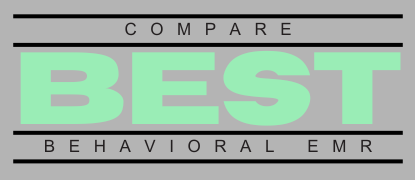
If you’ve ever stared blankly at your computer screen, overwhelmed by the sheer number of reports your behavioral health EMR can generate, you’re certainly not alone. Trust me, I’ve been there, sipping my morning coffee (okay, third cup), wondering exactly how these mountains of data translate into better patient care and smoother practice management. The good news? Once you master EMR reporting features, you’ll wonder how you ever managed your practice without them.
Today, let’s unpack these reporting tools, figure out how to leverage them for your behavioral health practice, and explore practical advice to streamline your clinical outcomes and administrative workflows. Ready to dive in? Let’s go!
Why EMR Reporting Features Matter in Behavioral Health
First things first: Why should you care about EMR reporting features anyway? After all, your passion lies in helping patients, not crunching numbers and analyzing spreadsheets.
Consider this: Imagine driving a car without a dashboard, unable to see how fast you’re going, how much gas is left, or if your engine’s overheating. Sounds stressful, right? EMR reporting features function similarly to your practice’s dashboard, giving you critical insights into patient progress, practice health, and compliance metrics. Without clear reports, you’re essentially driving blindfolded (and trust me, no one wants that!).
Key EMR Reporting Features Every Behavioral Health Practice Needs
So, what exactly should you look for when exploring behavioral health EMR software? While every practice has unique needs, let’s review some of the most valuable reporting features:
1. Clinical Outcome Tracking
Measuring clinical outcomes might sound intimidating at first, but it’s crucial for demonstrating patient progress and improving your care approach. A solid behavioral health EMR, like Opus or similar platforms, makes this easy by providing built-in tracking tools. These tools allow clinicians to:
- Monitor patient progress over time with visual charts
- Generate reports for individual patients or groups
- Identify trends to inform treatment decisions
Think of these reports as your GPS, guiding you toward more effective treatment strategies. With clear data in hand, you’ll confidently navigate your patients toward better mental health outcomes.
2. Compliance and Audit Reports
Ah, compliance, the necessary but often intimidating aspect of practice management. If the thought of audits makes you break into a cold sweat, you’re not alone. Luckily, EMR reporting features can significantly ease this anxiety.
Your reporting tools should effortlessly provide:
- HIPAA compliance checks
- Documentation completeness reports
- Billing accuracy insights
Many EMRs, including Opus, even offer automated compliance reporting to help you sleep easier at night (because let’s face it, no one enjoys compliance-induced insomnia).
3. Financial and Revenue Cycle Management (RCM) Reports
Managing finances might not be the reason you became a clinician, yet it’s essential for practice sustainability. Effective EMR reporting features improve your financial clarity, offering detailed insights into billing, reimbursements, and insurance claim statuses.
These financial reports can help you:
- Identify billing bottlenecks and speed up payments
- Review reimbursement rates across different payers
- Monitor outstanding claims to proactively manage cash flow
4. Appointment and Scheduling Reports
Are no-shows and last-minute cancellations wreaking havoc on your practice schedule? EMR reporting features can pinpoint scheduling patterns and patient appointment trends, helping you reduce gaps and increase productivity.
With actionable scheduling reports, you’ll be able to:
- Analyze no-show rates and identify frequent offenders
- Adjust scheduling practices to optimize clinician availability
- Send automated reminders tailored to specific patient groups
Tips for Getting the Most Out of Your EMR Reporting Features
Feeling overwhelmed by the possibilities? Don’t worry; here are some practical tips to help you make the most of your EMR’s reporting capabilities:
- Start small: Begin using just one or two reports that address immediate pain points. Gradually expand from there.
- Customize your dashboards: Most EMRs (yes, including Opus!) allow you to customize your reporting dashboards. Choose metrics that matter most to your practice.
- Regularly review and share: Make it a habit to regularly review key reports with your team. Sharing insights fosters transparency and helps everyone stay aligned.
- Don’t be afraid to seek help: If a report seems confusing, reach out to your software vendor’s support team. They’re usually eager to help (and perhaps even thankful someone actually called!).
Common Pitfalls and How to Avoid Them
Of course, no EMR is perfect. Here are some common pitfalls to watch out for when navigating your behavioral health EMR reporting features:
- Overcomplicating reports: Keep reports simple and actionable. If a report doesn’t help you make decisions, reconsider whether it’s necessary.
- Ignoring staff training: Invest in proper training to ensure everyone understands how to access and interpret reports effectively.
- Not setting clear goals: Determine upfront what you want to achieve using these reports. Clear objectives make reporting far more useful.
Ready to Take Your EMR Reporting to the Next Level?
At this point, you’re probably eager (or at least cautiously optimistic) about diving into your EMR’s reporting features. Remember, the right EMR reporting tools can significantly impact your patient care, compliance, and overall practice success.
Still unsure where to start or wondering if your current software is truly optimized for your needs? We’ve got you covered. Take advantage of our free practice analysis to identify opportunities to enhance your practice management and clinical outcomes.
After all, effective EMR reporting isn’t just about data, it’s about empowering you and your team to provide exceptional behavioral health care. And isn’t that why we’re all here?
